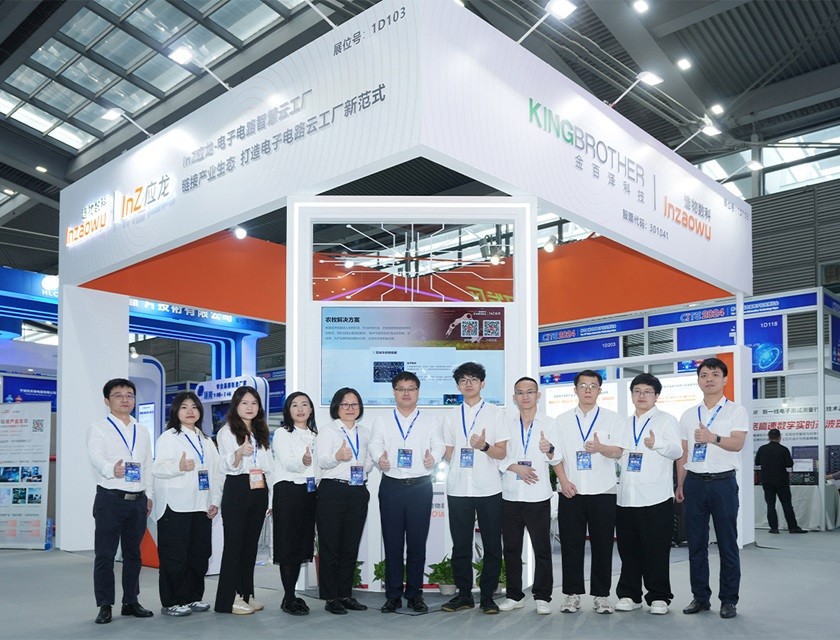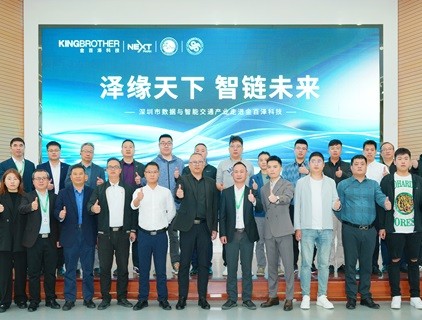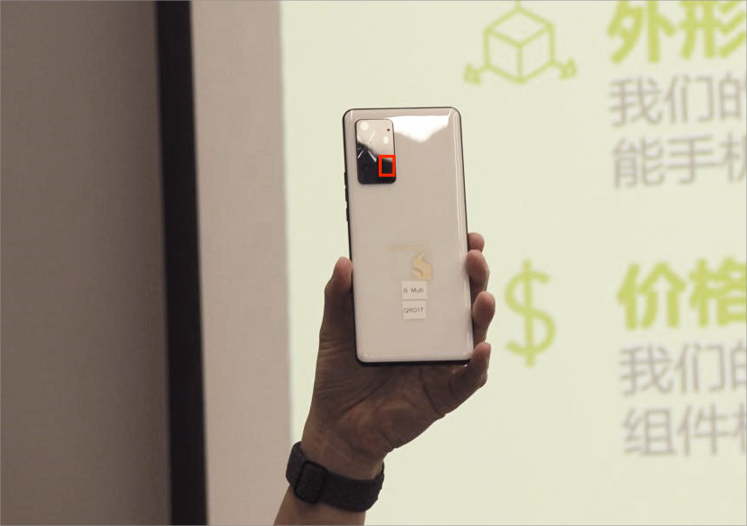行业计划测试新5G移动技术的六九(99.9999%)功能
Until the launch of 5G, every previous generation of mobile phone technology was primarily intended to improve the operation of the handset. First-generation mobile phone networks were analog systems that provided just enough bandwidth for voice calls. Introduced in the early 1990s, 2G was the first digital mobile technology, while 3G in the late 1990s made it possible for handsets to carry email messages and provide rudimentary access to web pages.
在5G问世之前,每一代手机技术的主要目的都是改善手机运行。第一代手机网络属于模拟系统,带宽仅够语音通话使用。2G是首个数字移动技术,于20世纪90年代早期问世;3G于20世纪90年代晚期问世,允许手机传输电子邮件信息,并提供对网页的基本访问。

It was not until the adoption of 4G technology in 2008 that real smartphone capability was enabled: 4G mobile broadband led to the development of smartphone apps, the proliferation of multimedia and streaming services, and access to high speed internet on-the-go.
直到2008年采用4G技术,智能手机功能才真正实现:以4G移动宽带为基础,开发出智能手机应用、多媒体和流传输服务,且可以随时访问高速互联网。
The recent installation of 5G networks marks the first time that a new generation of mobile technology has been built around the needs of machines and systems rather than handset users. The telecommunications industry’s plan for 5G envisaged technical breakthroughs in three main parameters:
最近安装的5G网络标志着新一代的移动技术首次以设备和系统需求为核心,而不是手机用户。电信行业的5G计划设想在三个主要参数上实现技术突破:
■ Latency, reliability, and determinism
■ 延迟、可靠性和确定性
■ Connection density
■ 连接密度
■ Bandwidth and the speed of data transfer
■ 带宽和数据传输速度
The reason for enhancing performance in these parameters was to enable real-time monitoring and control of dense concentrations of devices communicating concurrently. In a smart city scenario, for instance, 5G is expected to enable real-time information about the location of available on-street parking spaces to be displayed in the navigation system of cars in the vicinity. Such a smart parking system will require the simultaneous connection of thousands of proximity sensors or cameras and thousands of cars in a small area, continually transferring real-time data about space availability and location.
之所以提高这些参数的性能,是为了实时监测和控制同时通信的设备的密集程度。例如,在智慧城市场景中,我们期望5G能够实时提供街边空余停车位的位置信息,并显示在附近的车辆的导航系统中。这样的智能停车系统需要同时连接小范围内的数千个接近传感器或摄像头以及小范围内的数千辆汽车,不断传输关于空余停车位及其位置的实时数据。
The requirement of this and other applications for latency, density, and bandwidth is met by three technology enhancements embodied in the 5G standard specifications:
该应用和其他应用对延迟、密度和带宽的要求通过5G标准规范中的三项技术改进来满足:
■ Ultra-reliable low latency communication (URLLC) for real time-control systems
■ 实时控制系统的超可靠低延迟通信(URLLC)
■ Enhanced mobile broadband (eMBB) to support new bandwidth-dependent use cases, including augmented and virtual reality
■ 增强型移动宽带(eMBB),用于支持基于带宽的新用例,包括增强现实和虚拟显示现实
■ Enhanced/massive machine type communications (eMTC) for low power, wide area wireless networking
■ 面向低功率、广域无线网络的增强/大型机械式机器类通信(eMTC)
These 5G technology features make it capable of supporting the requirements of factory control systems for real-time determinism and six nines (99.9999%) availability. Yet the real-world experience of most mobile handset users accessing 2G, 3G, or 4G networks still involves black spots where coverage is weak or nonexistent, and of occasional and unpredictable dropped connections.
这些5G技术特性使其能够支持工厂控制系统对实时确定性和六九(99.9999%)可用性的要求。但是,在现实生活中,大多数手机用户在访问2G、3G或4G网络时,仍然会遇到黑点(网络覆盖较弱或不存在),偶尔还会发生意外掉线。
So is there a realistic prospect that mobile phone technology will be used to connect mission-critical, time-sensitive industrial machines?
那么,使用手机技术来连接任务关键型且对时间敏感的工业设备是否有前景?
Replacement of the Mature 4 mA to 20 mA Technology
替代成熟的4 mA至20 mA技术
For all the hype around state-of-the-art 5G technology, the reality is that most process equipment installations today include a provision for control via mature wired 4 mA to 20 mA links—a proven, dependable technology that dates back to the 1950s. This speaks to industry’s need for certainty and the avoidance of risk when implementing mission- or safety-critical control systems.
尽管围绕先进的5G技术进行了大肆宣传,但现实情况是,如今的大部分工艺设备装置都通过成熟的有线4 mA至20 mA链接实施控制,这是20世纪50年代推出的技术,久经考验。这说明行业在执行任务关键型或安全关键型控制系统时,需要保证确定性,规避风险。
But the tides of change cannot be beaten back forever, and innovations in the way factories operate give control system designers good reason to evaluate alternatives to 4 mA to 20 mA technology. As Industry 4.0 and other global phenomena accelerate the pace at which factory operations evolve, two trends are driving the introduction of new networking technologies: the introduction of autonomous mobile machinery and the development of more flexible manufacturing facilities to meet growing consumer demand for personalized or configured products.
但是,改革浪潮无法阻挡,随着工厂运营的方式不断创新,控制系统设计人员开始评估可以替代4 mA至20 mA技术的技术。随着工业4.0和全球局势迫使工厂不断改变运营方式,两种趋势迫切需要新的网络技术:引入自动移动设备;开发更灵活的制造设备以满足消费者对个性化或配置产品不断增长的需求。
In factory and warehouse settings, the use of autonomous guided vehicles (AGVs), cobots, and other types of autonomous mobile devices offer an effective way to increase efficiency and productivity. As automated equipment takes on the burden of performing repetitive and mundane tasks, workers are freed to transfer to higher value and more interesting factory operations that machines cannot perform.
工厂和仓库环境中会使用无人搬运车(AGV)、协作机器人和其他类型的自主移动设备,以便快速提高效率和生产力。随着自动化设备接手执行单调的重复性任务,工人可以转而执行价值更高、更有趣且机器无法执行的工厂操作。
The new generation of autonomous mobile devices such as AGVs requires a wireless communications connection that offers low latency for real-time control, high bandwidth to carry the signals from multiple sensors such as LIDAR scanners and video cameras, and high immunity to interference—the hallmarks of 5G mobile networks.
新一代自主移动设备(例如AGV)需要低延迟无线通信网络连接来提供实时控制,需要高带宽来传输来自多个传感器(例如LIDAR扫描仪和摄像机)的信号,且需要高抗扰度——这是5G移动网络的特点。
When factory operators replace wired with wireless connections, they also gain the flexibility to quickly reconfigure factory equipment to meet new or varied demands from consumers. The rise of e-commerce raised expectations from consumers for near-instant delivery of ordered products and for the ability to choose from a wider range of product options than ever before. The ability to move production or process equipment more quickly and easily is growing in value. A fixed, wired communications infrastructure is less flexible than a wireless network to which equipment can connect from any location. Wireless networks also reduce the cost, inconvenience, and technical difficulty involved in installing communications cabling.
工厂运营商将有线连接替换为无线连接之后,也获得了灵活性,可以快速重新配置工厂设备,以满足消费者的新需求。电子商务的兴起拔高了消费者的期望,他们希望购买的商品能够近乎即时送达,且可挑选的商品名录比以往更广泛。更快速、更轻松地移动生产或工艺设备,这种能力也在不断升值。固定的有线通信基础设施不如无线网络灵活,后者支持从任意位置连接设备。无线网络减少了安装通信电缆时的成本、麻烦和技术难度。
Over the long-term, then, factory operators are open to the benefits of wireless control capability alongside established wired communications technologies. In the immediate future, however, industry must prioritize its most important requirements, which are:
因此长远来看,在成熟的有线通信技术之外,工厂运营商乐于接受无线控制网络带来的好处。但是,在不久的将来,行业会优先考虑对其而言最重要的要求,包括:
■ High reliability and availability
■ 高可靠性和可用性
■ Security
■ 安全性
■ Robustness to cope with challenging industrial operating conditions
■ 应对挑战性工业操作条件的耐用性
■ Ultralow latency
■ 超低延迟
These factors underlie the longevity of the 4 mA to 20 mA standard for factory communications. And while factory operators are looking to replace 4 mA to 20 mA technology, their focus today is on the implementation of the time sensitive networking (TSN) standard for wired Industrial Ethernet communications, rather than for anything wireless.
这些因素决定了4 mA至20 mA工厂通信标准的使用期限。虽然工厂运营商希望替换4 mA至20 mA技术,但现在,他们倾向于面向有线工业以太网通信的时间敏感性网络(TSN)标准,而不是无线技术。
TSN has emerged as the preferred standard for high bandwidth, wired data communications in the factory, since it offers the ideal combination of reliability, robustness, a high data transfer rate, low latency measured in microseconds, and easy integration with enterprise IT network systems.
TSN已成为工厂高带宽有线数据通信的首选标准,因为它兼具可靠性、耐用性、高数据传输速率、低延迟(以微秒为测量单位),且易于与企业IT网络系统集成。
And because the TSN specification is a standard benefiting from cross-industry support, it is rapidly developing a rich ecosystem of suppliers of TSN components and systems, which includes Analog Devices.
TSN规范是一项得到跨行业支持的标准,所以它快速建立了丰富的TSN组件和系统供应商生态系统,也包ADI公司含在内。
OpenRAN: Non-Public Networks Enable the Validation of Claims Made for 5G Performance
OpenRAN:非公共网络支持验证关于5G性能的言论
Alongside the implementation of TSN networks, the scope for enhancing factory operations through the implementation of wireless networking is also coming under active evaluation. Some early adopters in the industrial community have already begun the work of testing, validating, and evaluating the operation of 5G networking systems inside the factory, while concurrently replacing legacy 4 mA to 20 mA systems with new TSN Ethernet networks. This validation process will find the most suitable applications for 5G technology.
除了推行TSN网络外,我们也在积极评估通过采用无线网络来改善工厂运营的范围。工业领域的一些早期采用者已开始测试、验证和评估工厂内5G网络系统的运行效果,同时使用新推出的TSN以太网网络来替换传统的4 mA至20 mA系统。这一验证过程将找到最合适的5G技术应用。
So factory operators are now starting to test the innovative features of the 5G specification, such as massive MIMO capability—the use of arrays of antennas to provide multiple physical transmission paths between a transmitter and receiver. An array may be configured to form multi-antenna beams transmitting to multiple receivers. This allows the implementation of techniques such as channel hardening, beamforming, rapid channel estimation, and antenna (spatial) diversity, the effects of which are to dramatically improve reliability and reduce latency compared to 4G mobile networking.
工厂运营商现在已开始测试5G技术的创新特性,例如大规模MIMO功能——使用天线阵列在发射器和接收器之间提供多条物理传输路径。阵列可以配置为形成多个天线波束,以发送至多个接收器。这样就可以采用信道加固、波束成型、快速信道评估和天线(空间)分集等技术,与使用4G移动网络相比,可以显著提高可靠性和降低延迟。
Indeed, one of the aims of the developers of the 5G standard was to enable wireless networks to achieve six nines reliability for packet delivery, comparable to that of a wired Ethernet network, and equivalent to a packet error ratio of 1:1,000,000. Latency of just 1 ms is also possible, which is well within the limit imposed by many industrial control applications.
事实上,5G标准开发人员的目标之一是使无线网络在数据包传输方面达到99.9999%的可靠性,与有线以太网的可靠性相当,相当于数据包的错误率为1:1,000,000。延迟达到1 ms也是可期的,完全符合许多工业控制应用的要求。
The question is, can this performance be achieved in the real-world conditions experienced inside a factory, where communications equipment might be subject to multiple sources of high amplitude radio frequency interference, transient voltage events, high temperatures, and other disturbances?
但在真实工厂环境中,通信设备可能受到多个高振幅射频干扰源、瞬态电压事件、高温和其他干扰的影响,这种性能能否实现?
In validating the real-world performance of a 5G installation, factory system designers have a choice: they can, of course, take advantage of 5G coverage provided by mobile network service providers. But the 5G standard also makes provision for the implementation of private systems, or so-called non-public networks (NPNs) that cover, for example, an industrial campus or a large factory complex. Different industrial users and use cases will favor a different choice of public or private network.
在验证5G设备的真实性能时,工厂系统设计人员有一个选择:利用移动网络服务提供商提供的5G覆盖。但是,5G标准也为实施私有系统或所谓的非公开网络(NPN)做了规定,例如覆盖工业园区或大型工厂的网络。不同的工业用户和用例会选择不同的公共网络或专用网络。
The implementation of 5G networking in the factory is also facilitated by developments from mobile network operators of the OpenRAN (Open Radio Access Network) specification. This has opened the market for 5G radio and core equipment to a broader range of suppliers in addition to those which traditionally served the telecoms equipment market. This has the potential to broaden the choice of equipment available to meet the needs of use cases different from those of mass-market public network operators and to encourage the development of 5G products by suppliers that are focused on the industrial market.
移动网络运营商制定OpenRAN(开放式无线接入网络)规范,这也推动了工厂的5G网络部署。除了传统服务于电信设备市场的提供商之外,更多供应商即将进入5G射频和核心设备市场。这有可能扩大可用设备的选择范围,满足与大众市场公共网络运营商不同的用例,鼓励工业市场供应商开发5G产品。
As a supplier of physical layer components and protocol software to manufacturers both of TSN equipment and of 5G infrastructure, Analog Devices is ideally placed to assess the prospects of each technology for implementation in industrial control systems. While the immediate future belongs to wired Industrial Ethernet technology, it is easy to imagine a future where AGVs and robots inside the factory transmit and receive time- and mission-critical data payloads via a 5G network—and the availability of 5G network coverage means that this is an actual rather than a theoretical possibility today.
作为为TSN设备和5G基础设施制造商提供物理层组件和协议软件的供应商,ADI公司可以公正地评估用于实施工业控制系统的各种技术。虽然当下有线工业以太网技术仍占主导,但可以想象,未来工厂内的AGV和机器人将通过5G网络发送和接收时间关键型和任务关键型数据负载——5G网络的覆盖意味着这一梦想已经成为现实,不再是理论上的可能性。
About the Author
作者简介
Brendan O’Dowd has over 30 years of experience in the industry working for companies like Tellabs, Apple, and Analog Devices. He is currently the general manager of Analog Devices’ industrial automation business.
Brendan O’Dowd拥有30多年的工业行业经验,他曾就职于Tellabs、Apple和ADI公司。他目前担任ADI公司工业自动化业务部总经理。

图片新闻
技术文库
最新活动更多
-
1月8日火热报名中>> Allegro助力汽车电气化和底盘解决方案优化在线研讨会
-
1月9日立即预约>>> 【直播】ADI电能计量方案:新一代直流表、EV充电器和S级电能表
-
即日-1.16立即报名>>> 【在线会议】ImSym 开启全流程成像仿真时代
-
即日-1.20限时下载>>> 爱德克(IDEC)设备及工业现场安全解决方案
-
即日-1.24立即参与>>> 【限时免费】安森美:Treo 平台带来出色的精密模拟
-
即日-1.31立即参与>>> 【限时免费下载】村田白皮书
推荐专题









 分享
分享















发表评论
请输入评论内容...
请输入评论/评论长度6~500个字
暂无评论
暂无评论